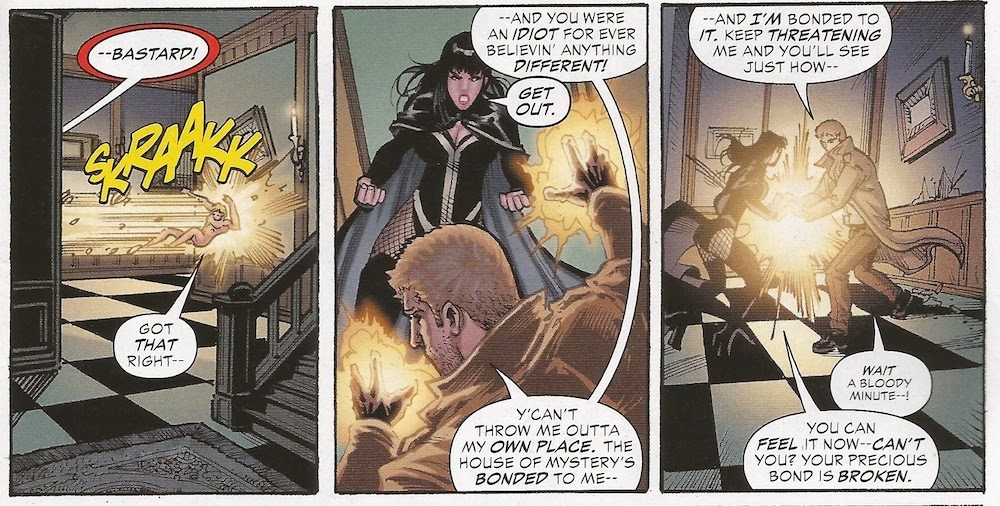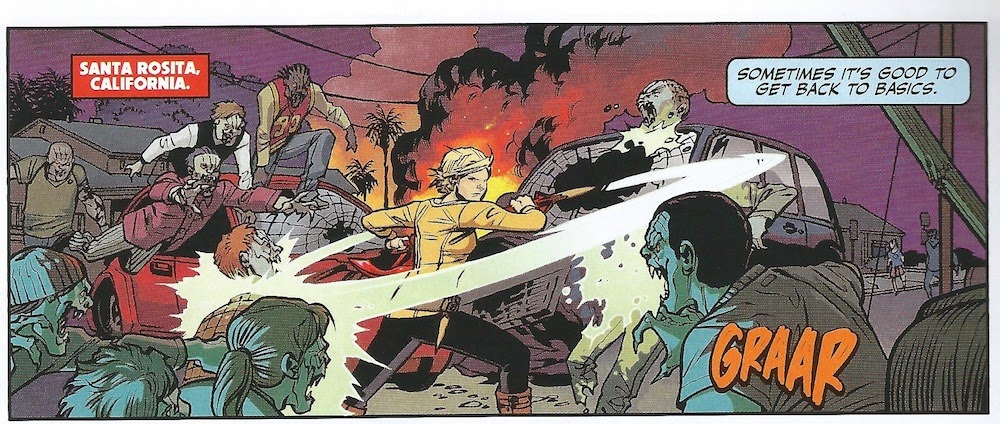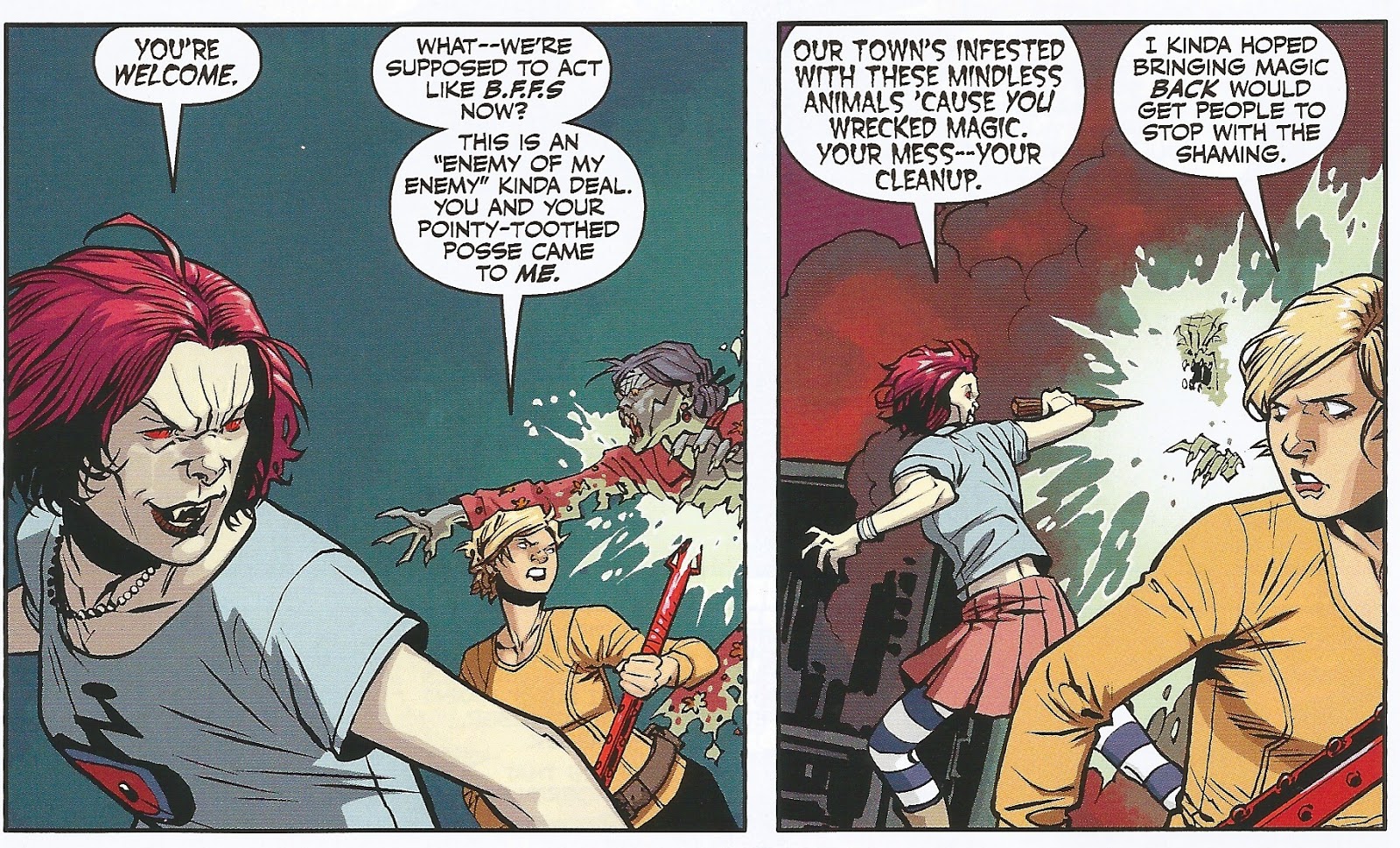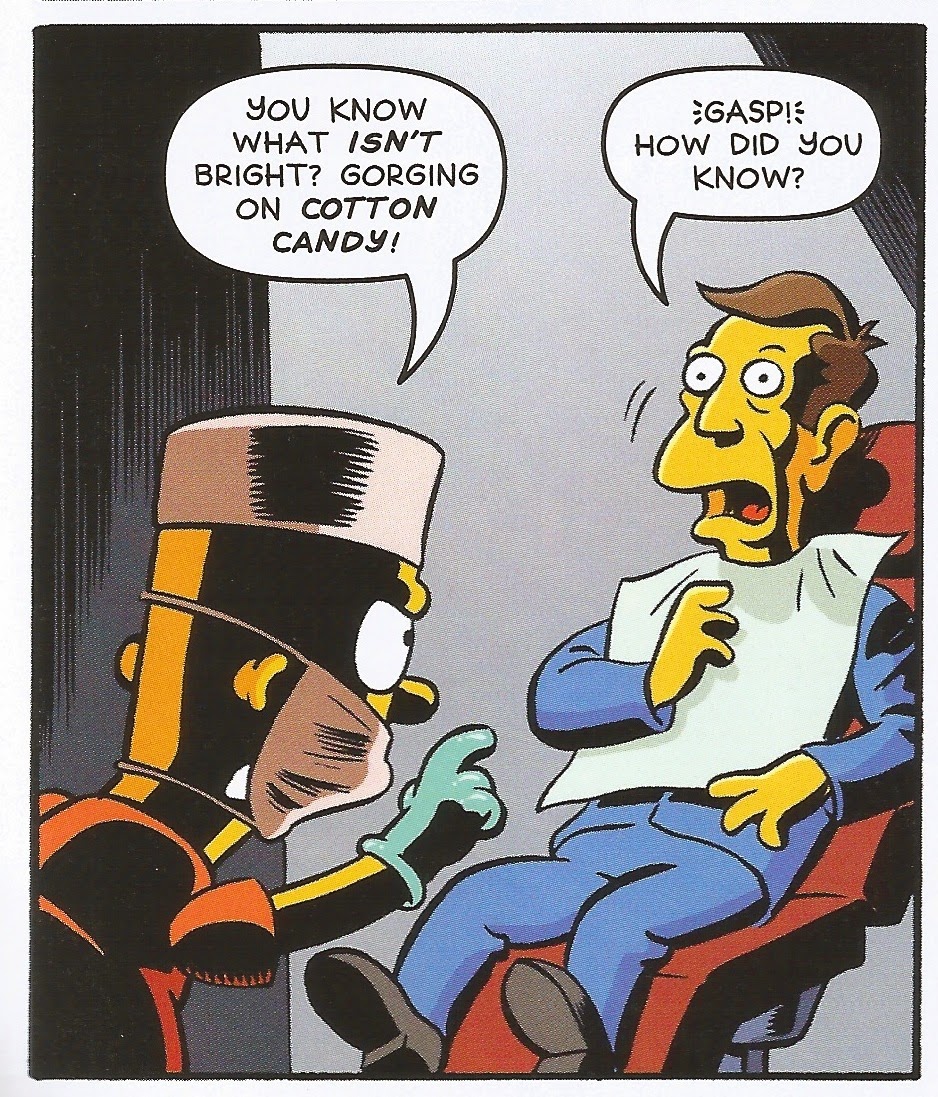Pick of the Brown Bag
March 26, 2014
by
Ray Tate
The Pick of the Brown Bag is live! This week I review All-Star Western, Aquaman, Captain Midnight, Catwoman, Doc Savage, The Flash and Justice League Dark. It you're wondering where World's Finest is. Like you, I have to wait for the third part before I read the fourth part. Thank you, DC. That was ham-fisted.
Archaeology. In the real world, it's an innocuous safe science in which you uncover and explore the origins of humankind through inanimate objects and dead languages. In cinema, archaeology, with the exception of anthropology, is the most dangerous career choice one can make.
Archaeology students in the new 52 fair worse than archaeology students in cinema. When Doctor Evans uses Aquaman's stolen trident to open what appeared to be a gateway between Atlantis and the surface world, all hell literally breaks lose. Woe be tide to his students.
You may think because this is a comic book and not truly geared for mature readers that the girl's safety is assured. Afraid not. This issue of Aquaman sports one of the highest body counts I've ever seen in a superhero comic book. Artist Paul Pelletier delights in disturbing off panel deaths and explicit demises seen in silhouette caused by grotesque monsters that are half-Muppet and half-Lovecraft.
Normally I would be railing about the portrayal of inefficacy in superheroes, but writer Jeff Parker and artist Pelletier convince the reader that these deaths were inevitable. The cards were stacked against the ambitious Dr. Evans, and none of this disaster is on Aquaman. Furthermore, the monsters are extraordinarily cunning and not mindless beasts, which makes their bloodfest gluttony all that more unsettling. They pulled a remarkable mind trick on Dr. Evans that at once reinforces their power and the ability of their jailers.
Aquaman arrives as quick as possible, but he's not the Flash. He cannot stop an onslaught that happens in an eye-blink. As soon as the creatures escape, they begin to feed. When Aquaman does arrive, however, have at thee.
That Would Be Aquaman Decking a Giant Worm-Thing
Aquaman demonstrates his strength, speed, intellect, wisdom and telepathic power to control aquatic life all in one fell swoop. It's a terrific issue filled with the things that make comic books special: superheroes, monsters and one massive surprise that arises at the cliffhanger.
Scooby-Doo Team-Up's Sholly Fisch dips his toe once again into the continuity pool with a highly enjoyable inventory issue of Catwoman. Fisch introduces Selina Kyle to new readers and reminds faithful fans exactly what distinguishes Catwoman from all others in DC comics. She's a thief. Not just any thief. She's a master thief, the best thief on the planet.
Catwoman crashes a gala ball signifying the merger of a pharmaceutical company and Waynetech. The merchandise. A pair of experimental drugs: one for cancer the other a powerful steroid.
Marvel as Fisch times out a clockwork heist in which Catwoman outwits and out-maneuvers multiple security devices and personnel. This is kind of what I hoped Catwoman would be about. Selina planning out and pulling off various crimes, without a single body dropping.
Catwoman has a near spotless history of being averse to murder and uses violence only when necessary. Even while Batman was still sending criminals to their doom, Catwoman exhibited mercy.
Selina's score goes haywire when she finds out the hard way exactly why her client wished one of the drugs destroyed. This surprising turn of events institutes an exploration into Catwoman's secondary trait, heroism. Catwoman is a member of the Batman Family for a reason. She doesn't put her own needs above all else.
The save also demonstrates some terrific visual continuity on the part of artist Pat Oliffe. The little girl in danger appears on page two of the book.
She's not just some faceless victim. There's a finite population in the room. Oliffe takes advantage of that.
Oliffe's artwork is overall exciting, He cut his teeth on a very animated Untold Tales of Spider-Man, followed through with Spider-Girl and now orchestrates the slinky exploits of somebody perfect for his lanky style of frenetic figure illustration. Recommended, especially for those dissatisfied with Catwoman's current role in the DCU.
As a whole, this issue of Justice League Dark is pretty good. Despite J.M. DeMatteis' insistence otherwise, the plot is easy to follow, even if you've come in late to the show. Technically speaking, this is only a chapter in a sorcery wide crossover all dovetailing theoretically from the events of Forever Evil. Honestly though. Missing other chapters won't hurt a bit.
The husk of Felix Faust lies on the floor. The good guys are stuck in a Big Cosmic Doohickey. Constantine gains a doppelganger. One of the trench-coats wants to take Faust's place. The other seeks to restore the occult abilities of former teammates and free them.
The cast exhibit valid personalities. Zatanna narrates, but I don't believe she would speak like DeMatteis. Her patter would resemble the sharpie dialogue of a performing magician. Somebody used to the limelight and an audience.
The implications in Justice League Dark could be vast in scope and explain why there's no carnage from Forever Evil in the future. Artwork by Batgirl's Vincente Cifuentes is impressive, almost making up for the loss of Michael Janin. In addition, the story changes the status quo, with Zatanna assuming leadership of Justice League Dark and exhibiting some real teeth.
On the other hand, J.M. DeMatteis is exposition crazy and terribly afraid his audience won't get it. So he spells it out. A lot. Worse, he's frequently a pastiche of other writers. We start off with a riff on Russell T. Davies' Doctor Who.
That of course sounds like Rose Tyler and her curtain call from "The Army of Ghosts."
Then we have an unfortunate Rod Serling parody.
Nobody delivered lines such as these like Serling. Nobody could and still can't. So why attempt it? Fortunately, this preoccupation with momento mori doesn't last long. A group of demons attacks the team at what they see as their most vulnerable moment. Swamp Thing begs to differ.
As Constantine makes a hasty exit stage right, Zatanna directs Swampy, Black Orchid, Pandora, Frankenstein and the rest to beat the snot out of the bad guys, and really, that's half the battle of making a good comic book. So despite the wordiness, and the annoying mimicry of other writers, I'm still recommending Justice League Dark.
The Flash cleans up its supernatural killer story. Despite this tale relying on a lot of hocus-pocus nonsense, departing writer Brian Buccellato uses scientific explanations interlaced with the Flash's powers to explain how the Scarlet Speedster defeats the apparition. He simultaneously gives a good reason for Deadman's team-up with the Flash, which was cool no matter what, and more importantly he crafts a satisfying conclusion to the subplot of the Flash perhaps being Captain Darryl Frye's son. Buccellato doesn't answer all the questions, but it's this personal drama that's more of a draw to the issue.
Captain Midnight takes on Fury Shark just as she's planning her next move. The major disruption leads to moments of Midnight's new team dispatching Nazis with alacrity and a moment for redemption. When Midnight finally questions Fury Shark, he learns some unwelcome truths about how the Nazi daughter gained access to his technology. Fury Shark gets the best moments this issue through her attempts to fluster Midnight with her Nazi philosophy, but something unexpected happens to reaffirm Midnight's somewhat old fashioned ideals. It's a definitely unpredictable comic book.
Doc Savage returns in the late seventies to stop a dangerous science experiment begun by one of his former aides. The science is cobbled together from a hardware store metaphor and a primer, but that doesn't matter. I'm recommending the book because of the great character dynamic between Doc and a nihilistic punk rocker. He reaches her. She reaches him. It all plays authentic because the punk movement arose in part as a response to hypocrisy and the ersatz. Doc's feelings are genuine. His optimism is true, and a punk rocker would admire that.
Booster Gold returned Jonah Hex back to his proper time, and Gina went along for the ride. Unfortunately, they found themselves surrounded by Natives, who didn't believe Jonah was who he claimed. This was due to surgeons from our time repairing his face, which they thought was the result from his motorcycle accident.
It's no great surprise how Jonah gets out of this particular situation, and his method is always very entertaining, echoing the efficiency of Django. Either one. The segue develops into a story within a story, in which Jonah keeps Gina awake with a tale sporting an antagonist all too familiar.
How sad that this type of jackass still exists. Even worse. Some of them are in Congress. Palmiotti and Gray however once again remind readers that Jonah Hex, despite being a bounty killer, is a proponent of law and order. They also peel back Hex's layers to give a more nuanced look at Hex's mind-set. He's not a straightforward gunslinger.















.jpg)



































